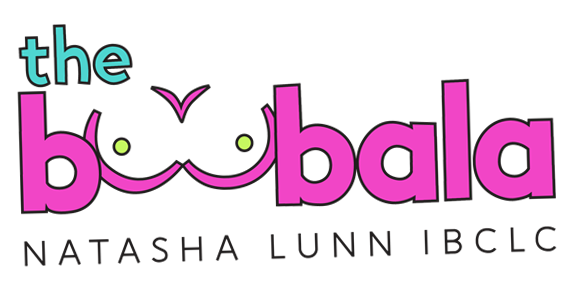Page Content
- When should you not have fillers?
- Is it safe to get fillers while breastfeeding?
- Has anyone gotten Botox while breastfeeding?
- Who should avoid fillers?
- What chemicals are not safe for breastfeeding moms?
- Is hyaluronic acid safe while breastfeeding?
- Can I get fillers while pregnant?
- How long after giving birth can you get fillers?
- How soon postpartum can you get Botox?
- What is breastfeeding safe instead of Botox?
Understanding Fillers While Breastfeeding
The decision to get dermal fillers while breastfeeding is a nuanced one, often surrounded by concerns about safety for both the mother and the baby. As new mothers navigate the demands of breastfeeding, they may also wish to address aesthetic concerns, leading to questions about the implications of cosmetic procedures during this sensitive period.
Safety Considerations
Medical experts generally consider dermal fillers to be low-risk for breastfeeding mothers. The primary concern revolves around the substances used in these fillers and their potential effects on breast milk. Most fillers, such as hyaluronic acid-based products, are not believed to transfer into breast milk in significant amounts. This means that, in theory, receiving fillers should not pose a direct risk to a breastfeeding infant.
However, it is crucial for mothers to consult with their healthcare providers before proceeding with any cosmetic procedures. Each individual’s health status and the specifics of the filler being used can influence the safety of the procedure. Experts recommend that mothers discuss their plans with both their dermatologist and their pediatrician to ensure that all potential risks are considered.
Timing and Recovery
Another important factor is the timing of the procedure. Many practitioners suggest waiting until breastfeeding is well-established, typically around six weeks postpartum, before considering fillers. This allows the mother to focus on her recovery and the initial bonding period with her baby without the added stress of cosmetic procedures.
Recovery from fillers is usually quick, but there can be side effects such as swelling or bruising at the injection site. Mothers should be aware that these effects could temporarily affect their ability to care for their newborn, especially if they require additional rest or care during recovery.
Emotional and Psychological Aspects
The desire to enhance one’s appearance postpartum can stem from various emotional and psychological factors. Many women experience body image changes after childbirth, and seeking cosmetic procedures like fillers can be a way to regain confidence. However, it’s essential for mothers to approach these decisions thoughtfully, considering both their physical health and emotional well-being.
Conclusion
In summary, while dermal fillers are generally considered safe for breastfeeding mothers, it is imperative to engage in thorough discussions with healthcare professionals. Each mother’s situation is unique, and understanding the potential risks and benefits is key to making an informed decision. Ultimately, the health and safety of both mother and baby should remain the top priority.
When should you not have fillers?
The major contraindications to the use of a filler are as follows: active infection near the site of injection, a known allergy/hypersensitivity to the material or to the lidocaine mixed in the syringe of the filler (Zyderm, Zyplast, Cosmoderm, Cosmoplast and certain hyaluronic acid fillers and Artefill) and glabellar …
Is it safe to get fillers while breastfeeding?
Fillers are generally fine. Most are slowly absorbed over many months and are no problem to a breastfeeding infant. Tom Hale Ph. D.
Has anyone gotten Botox while breastfeeding?
Botox injections are generally regarded as safe, and there haven’t been any reported cases of transfer from mother to child, as of yet. However, it’s important to note that because Botox injections contain neurotoxins, they can be hazardous in large amounts or for individuals allergic to these substances.
Who should avoid fillers?
Skin conditions: You may need to avoid cheek fillers if you have certain skin diseases or if your skin is extra sensitive. Smoking: You may heal slower if you smoke. Transplants: You may have an increased risk of infections if you’ve had a bone marrow transplant or organ transplant.
What chemicals are not safe for breastfeeding moms?
Some common culprits to avoid
- Parabens: These are antimicrobials used as preservatives to prevent bacteria and mold from growing in cosmetics.
- Phthalates: This class of chemicals, typically found in nail polish and many cosmetics containing fragrance, can disrupt hormones and alter development in a growing baby.
Is hyaluronic acid safe while breastfeeding?
This is because it has the unique ability to attract and retain 1,000 times its weight in water. Hyaluronic acid is not only a safe hydrator for pregnant and breastfeeding mothers, but it also has several other perks.
Can I get fillers while pregnant?
Why Can’t I Get Them During Pregnancy? The reason pregnant and breastfeeding women shouldn’t get Botox or fillers (according to the FDA) is because of their fluctuating pregnancy hormones. It can cause issues with blood flow as well as swelling. In other words, it might cause issues for the mother—not the baby.
How long after giving birth can you get fillers?
This, in conjunction with the lack of research on the safety of fillers for new mothers, is a reason to stay away. It’s recommended to receive fillers once you are no longer pregnant or breastfeeding and the postpartum phase has ended.
How soon postpartum can you get Botox?
Most healthcare providers recommend waiting at least six months postpartum before resuming BOTOX® treatments.
What is breastfeeding safe instead of Botox?
Potential medical alternatives to Botox injections include the following, although not all should be used by breast-feeding women:
- acupuncture.
- massage and cupping therapy combined, or FaceXercise.
- collagen supplements and creams.
- chemical peels.
- hyaluronic acid injections.
- microdermabrasion.

